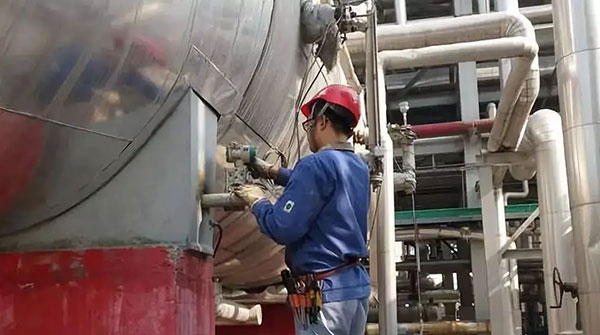Liquid Level Measurement Method
In the automated production process of industries such as food and beverages, daily chemicals, medicine, semiconductors, etc., in order to ensure the consistency of product quality, the era of direct manual monitoring and intervention in the production process has gone. Liquid level measurement and monitoring are playing an increasingly important role. It can be said that the measurement and monitoring of the liquid level directly affects the quality of the product, and even whether the production process can be carried out smoothly.
At present, simple mechanical and rough measurement and monitoring are increasingly being replaced by measurement methods with high reliability, high stability, simple installation and debugging, compact size and various applications. In addition, due to the complexity and variability of the liquid level detection environment, it also brings different challenges to the application of level sensor. For example: high-viscosity liquid level detection, waste water with impurities level monitoring, liquid with foam level measurement, high-corrosive liquid level alarm, etc. In response to various needs in the market, R&D personnel have developed a variety of measurement technologies and liquid level measurement methods. The following are some common liquid level measurement methods.
Floating Ball Measurement
This method is the simplest and oldest detection method, and the price is relatively cheap. The change of the liquid level is mainly detected by the up and down of the floating ball. It is a mechanical detection, and the detection accuracy is easily affected by buoyancy, and the repeatability is poor. Different liquids need to be recalibrated. It is not suitable for viscous or impurity-containing liquids, which is easy to cause the floating ball to block. At the same time, it does not meet the application requirements of the food hygiene industry.
Tuning Fork Vibration Measurement
Tuning fork measurement is only switch output and cannot be used for continuous monitoring of liquid height. The most representative is the tuning fork liquid level switch. The principle is: when the liquid or bulk material fills the two vibrating forks, the resonant frequency changes, and the switch signal is sent out depending on the change of the detection frequency. It can be used for high-viscosity liquid or solid bulk monitoring, mainly as anti-overflow alarm, low-level alarm, etc. It does not provide analog output. In most cases, it needs to be installed on the side of the container.
Ultrasonic Measurement
Since its principle is to calculate the liquid level height by detecting the time difference between ultrasonic transmission and reflection, it is easily affected by the energy loss of ultrasonic transmission. It has the characteristics of easy installation and high flexibility, and can usually be installed at high places for non-contact measurement. However, when used in an environment containing steam and powder layers, the detection distance will be significantly shortened. Therefore, it is not recommended to use it in an wave-absorbing environment with foam or the like.
TDR Measurement
TDR measurement, also known as guided radar measurement or microwave principle measurement, has the benefits of laser measurement, such as: easy installation, calibration, flexibility, etc. However, it’s superior than Laser detection in many ways, such as no need for repeated calibration and multi-function output. It is suitable for various liquid level detection with foam while not affected by liquid color, and can even be applied to highly viscous liquids. It is relatively less disturbed by the external environment, but its measurement height is less than 6 meters.
Laser Measurement
The laser sensor is based on the principle of optical detection, and detects by reflecting light from the surface of the object to the receiver. The light spot is small and concentrated. It is easy to install and calibrate, has good flexibility and can be used for continuous or limited bulk materials or liquid level alarm. However, it is not suitable for transparent liquids, (Transparent liquids are easy to refract light, so that the light cannot be reflected to the receiver.) foam or steam environments, (It can not penetrate foam or are easily disturbed by steam.) fluctuating liquids (easy to cause malfunction), vibration environment, etc.
Photoelectric Refraction Measurement
This detection method emits a light source inside the sensor, and the light source is totally reflected to the sensor receiver through the transparent resin, but when it encounters the liquid level, part of the light will be refracted to the liquid, so that the sensor detects the total reflected light value to monitor the liquid level. The detection method is cheap, easy to install and debug, but it can only be applied to transparent liquids, and only outputs switch signals.
Capacitive Measurement
Capacitive measurement mainly measures the height of the material by detecting the change of the capacitance value due to the change of the liquid level or the height of the bulk material. There are many types, such as capacitive level gauge and capacitive proximity switch that can output analog quantity. The capacitive proximity switch can be installed on the side of the container for non-contact detection. When selecting, it must be noted that capacitive sensors are easily affected by different container materials and solution properties, such as plastic containers and attachment that easily affect the analog output of capacitive sensors.
Static Pressure Measurement
This measurement method uses a pressure sensor installed at the bottom of the liquid. By detecting the liquid pressure at the bottom, the liquid level height is converted and calculated. The reference value of the bottom liquid pressure is the atmospheric pressure connected to the top or known air pressure. This measurement method requires the high-precision, flush-type pressure sensors, and the conversion process needs to be continuously calibrated. Its advantage is that the detection is not limited by the height of the liquid level. But the higher the liquid level is, the more accurate the sensor shall be. And the calibration needs to be repeated when it is used for a long time or when the liquid is replaced.


